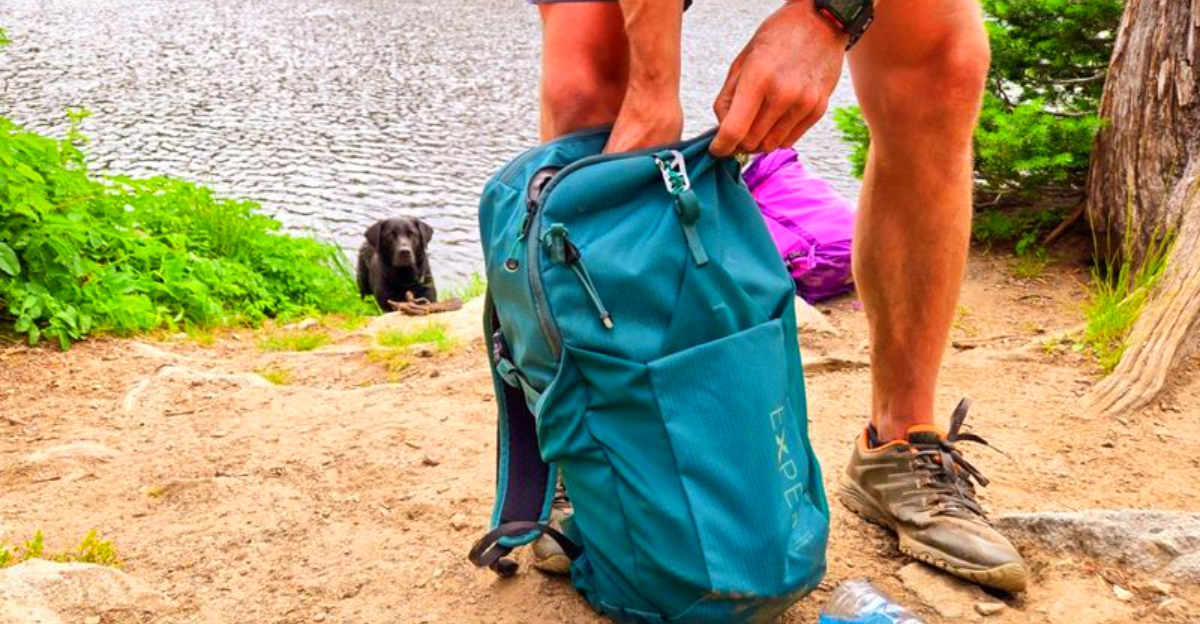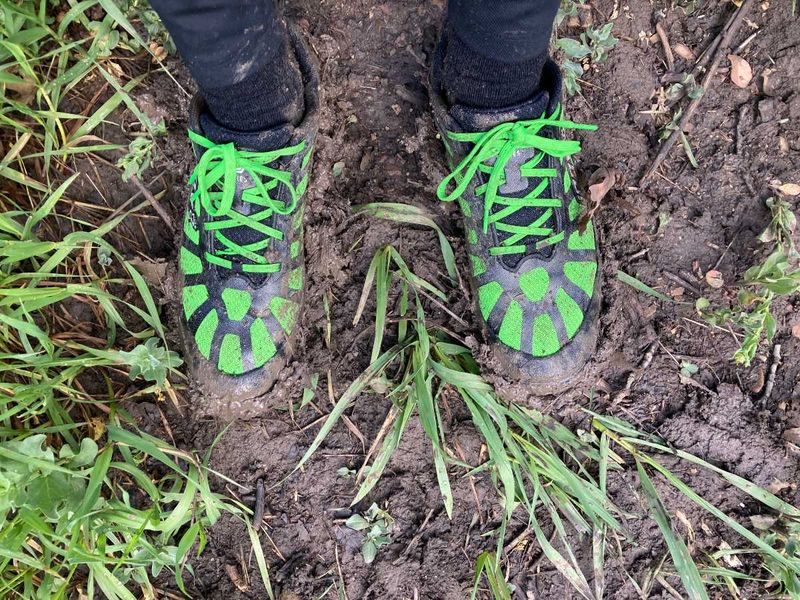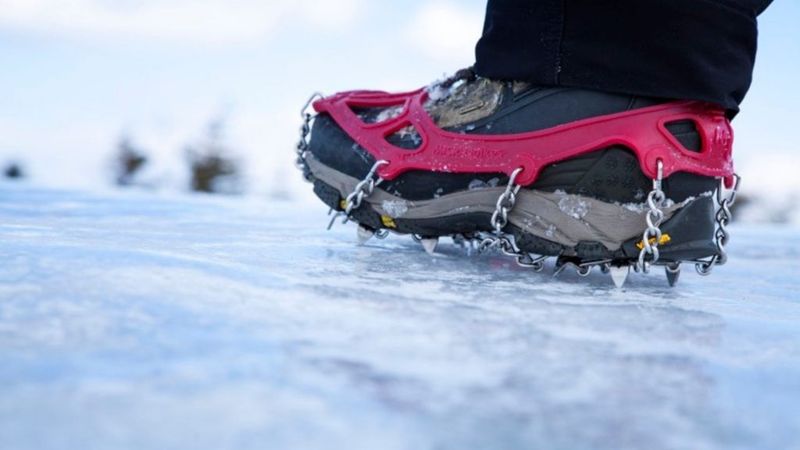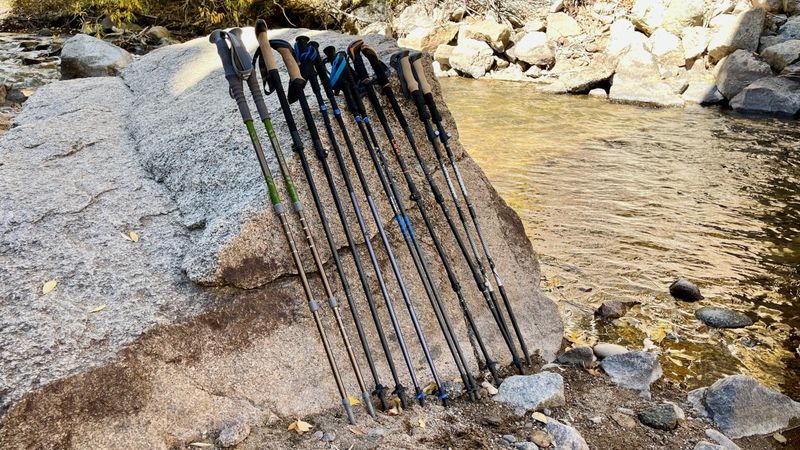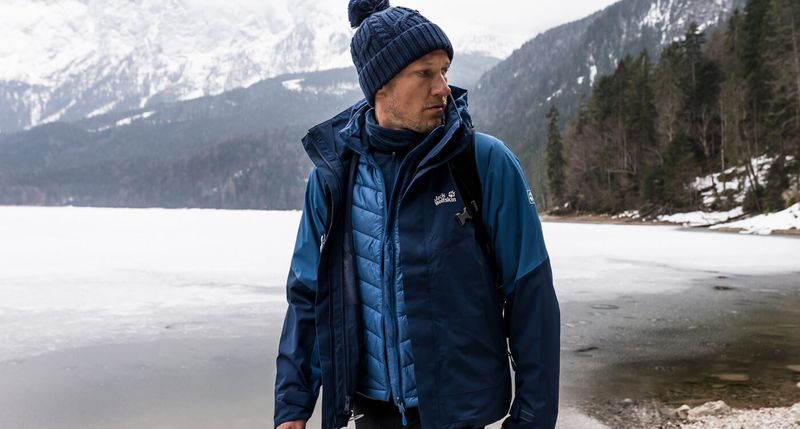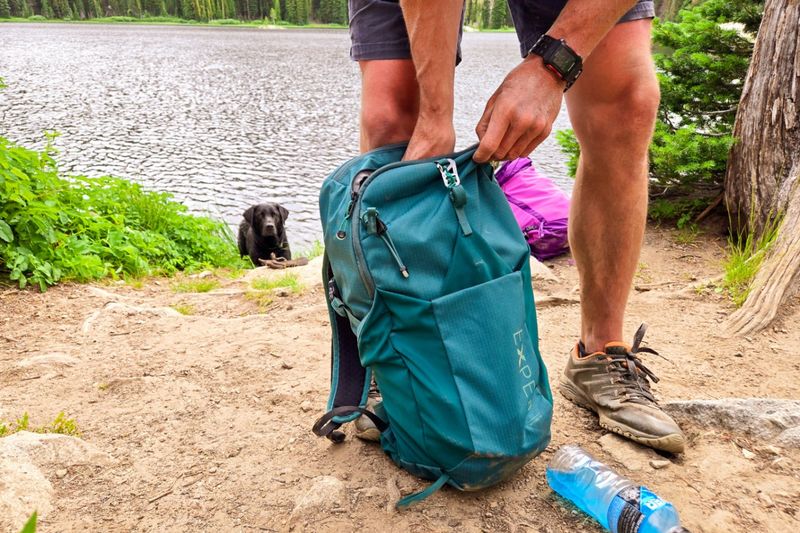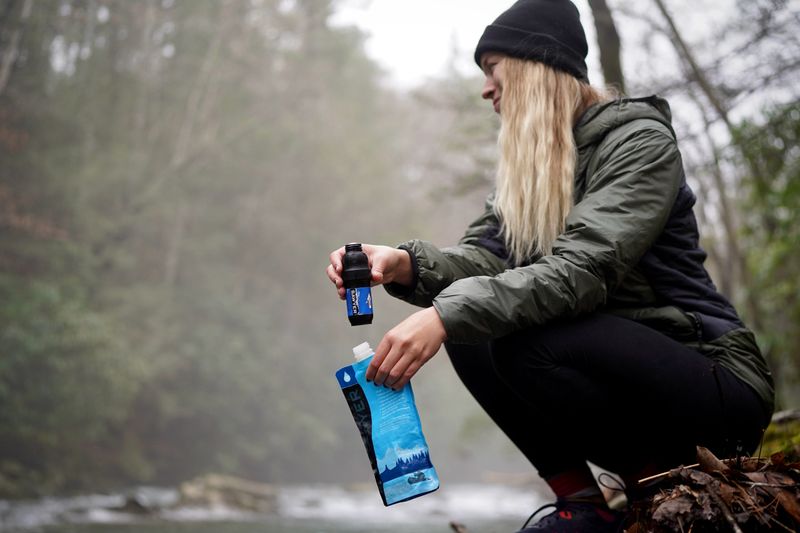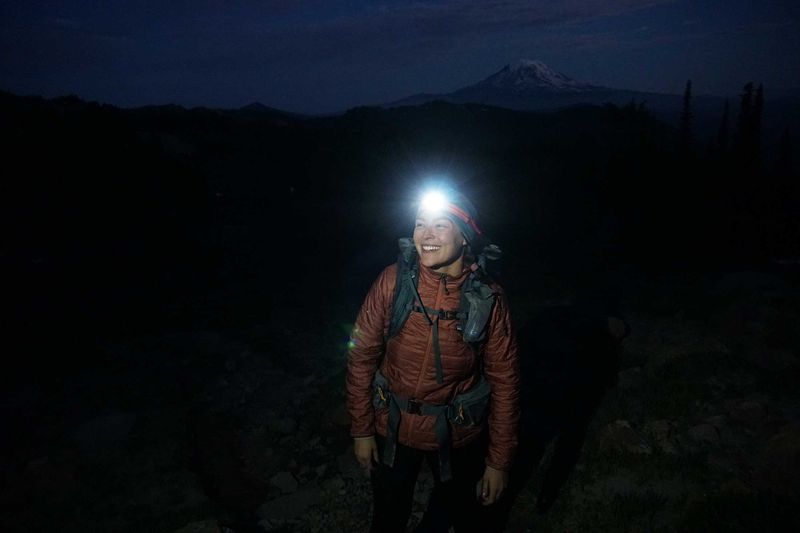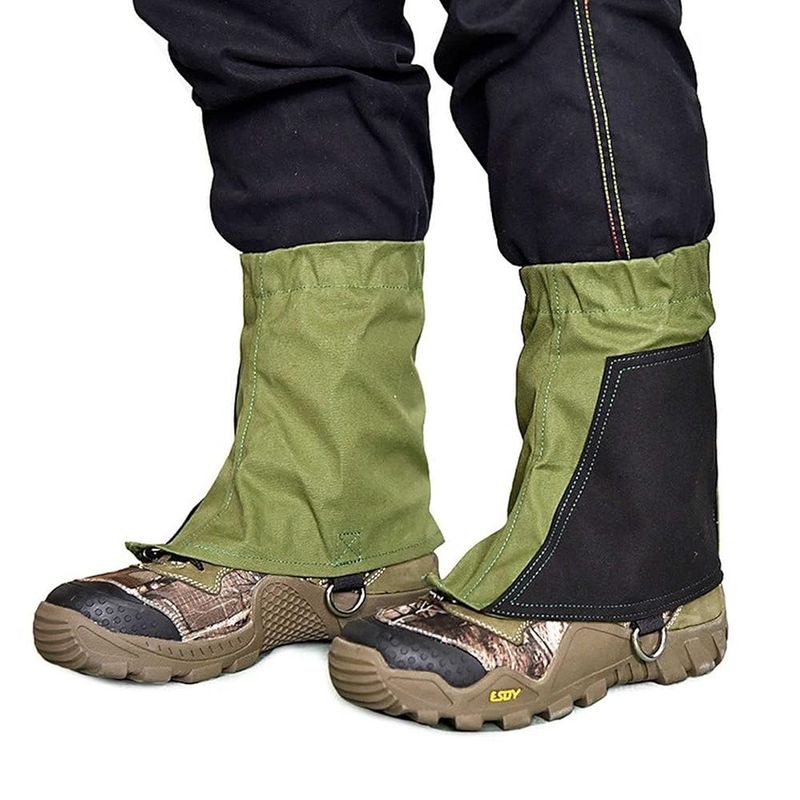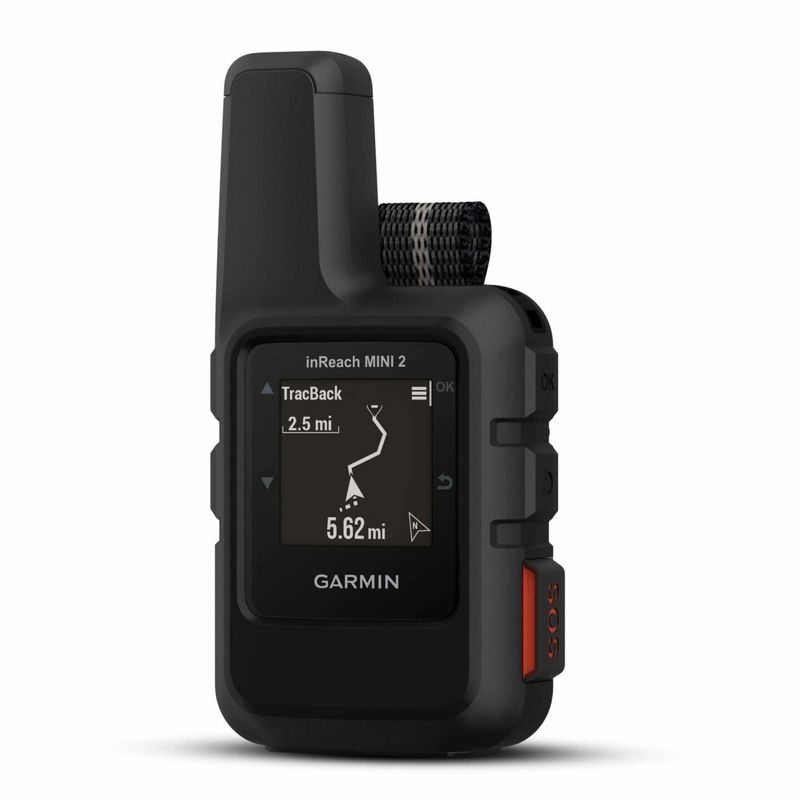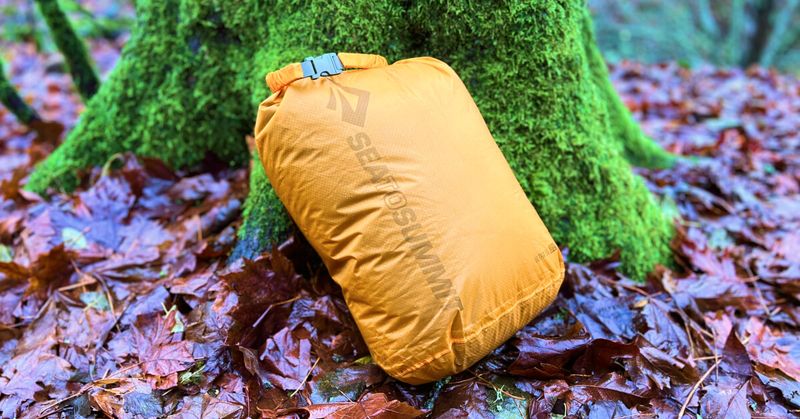When trails throw everything at you—slippery mud, jagged rocks, icy patches—you need gear that adapts without weighing you down. Most hikers pack too much or too little, then struggle when conditions shift halfway up the mountain. The smartest approach is building one versatile kit that handles surprise weather and tricky terrain, so you can focus on the views instead of your blisters.
1. Footwear: mix traction, protection, and drainage
Your feet take the biggest beating on variable trails, so choose shoes or boots that balance grip, armor, and breathability. Trail runners with deep lugs and rock plates excel on fast-moving hikes over loose dirt and sharp stones. Their airy uppers dry quickly after creek crossings, keeping you comfortable mile after mile.
Mid-height boots make sense when you’re hauling heavy loads or bushwhacking through thick brush. The added ankle coverage and stability come at a slight weight cost, but they shine in rough conditions. Always try boots late in the day when your feet are slightly swollen to ensure a proper fit.
Waterproof membranes can help in constant rain, but they trap heat and dry slowly once moisture sneaks inside. For most mixed-terrain trips, breathable shoes that drain fast beat sealed boots every time.
2. Traction add-ons for ice and shoulder season
Packed snow and icy patches turn easy trails into skating rinks without the right traction. Microspikes—lightweight elastomer harnesses with short chains and teeth—bite into frozen surfaces and work with both trail runners and boots. They’re far more flexible and packable than full crampons, making them ideal for non-technical routes.
Kahtoola MICROspikes and Hillsound Trail Crampon Ultra are two popular choices that fit a wide range of footwear. They slip on in seconds and stow neatly in your pack when the trail warms up. Full crampons are overkill unless you’re tackling steep, technical ice.
For shoulder-season hikes where you might hit frozen morning trails that melt by noon, microspikes are the perfect insurance policy.
3. Adjustable trekking poles (your “4WD” switch)
Think of trekking poles as a four-wheel-drive upgrade for your legs. They improve stability on loose scree and take serious pressure off your knees during long descents. Adjustable lengths let you shorten the poles for uphill climbs and extend them for downhills or tricky sidehilling sections.
Modern poles come in aluminum or carbon fiber, with various locking mechanisms like twist locks or lever clamps. Aluminum is durable and affordable, while carbon fiber shaves weight but costs more. REI’s buying guide covers shaft materials, locking systems, and how to size poles to your height.
OutdoorGearLab runs detailed comparative tests across brands, helping you find the right balance of weight, durability, and price for your hiking style.
4. Layering system: one setup for heat, wind, and surprise squalls
Weather in the mountains changes faster than your playlist, so a three-layer system gives you the flexibility to adapt. Start with a moisture-wicking base layer—merino wool or synthetic—that pulls sweat away from your skin. Add a mid-layer fleece or active-insulation jacket to trap warmth when temperatures drop.
Top it off with a breathable waterproof shell that blocks wind and rain without turning you into a sauna. The beauty of this system is that you can peel off or add layers as terrain and weather shift. REI’s expert advice explains how each fabric works and when to choose specific materials.
Carrying all three layers means you’re ready for sunny ridgelines, shaded valleys, and sudden squalls—all in one hike.
5. Daypack that carries across seasons (20–30L)
A versatile 20–30-liter daypack holds everything you need—extra layers, water treatment, traction devices, and the Ten Essentials—without feeling like a moving van. Look for a supportive hipbelt that shifts weight off your shoulders and quick-grab hip or side pockets for snacks, phone, or sunscreen.
External attachment points are crucial for wet layers or muddy microspikes you don’t want inside the main compartment. Some packs include built-in rain covers, while others rely on a simple dry bag liner. WIRED’s day-hiking pack guide outlines what to look for, including frame versus frameless designs and pocket configurations.
Choose a pack that fits your torso length and has enough capacity for shoulder-season gear without excess bulk.
6. Water: filter fast, anywhere
Running creeks, murky ponds, and silty streams all require different filtering strategies. Squeeze filters like the Sawyer Squeeze and Katadyn BeFree top most test roundups for speed and packability. They screw onto standard bottles and let you filter on the move without stopping to set up a pump.
Pump and gravity systems work better for groups or base camps, but they add weight and bulk. OutdoorGearLab and WIRED run detailed comparative tests that cover pros and cons for each filter type. Consider your typical water sources—clear mountain streams versus tannic swamps—and pick accordingly.
Carrying a reliable filter means you can refill anywhere, cutting pack weight and keeping you hydrated on long, dry stretches.
7. Headlamp: powerful, weather-ready, glove-friendly
Trails get technical fast after sunset, and fumbling with your phone’s flashlight is a recipe for a twisted ankle. A good headlamp delivers enough lumens to light your path, with a beam pattern that balances flood and spot modes. Battery life matters too—look for models that run at least four hours on high.
Glove-friendly controls are essential when temperatures drop and your fingers go numb. REI’s headlamp guide explains specs like lumens, beam distance, and run time. Recent roundups highlight dependable models like the Petzl Swift RL, Black Diamond Storm and Spot, and BioLite Dash 450.
Weather-resistant housings protect against rain and snow, so your light keeps working when conditions turn nasty.
8. Gaiters: block grit, mud, slush
Pebbles, sand, and slush have a sneaky way of finding their way into your shoes, turning a pleasant hike into a blister factory. Low to mid-height gaiters wrap around your ankles and shoe tops, sealing out debris in deserts, muddy forests, and spring snow. They’re lightweight insurance that takes seconds to strap on.
Most gaiters use hook-and-loop closures or elastic cords with toggles, making them easy to adjust on the fly. REI’s how-to guide covers fit and attachment methods, while recent comparative testing highlights durability and breathability differences. Look for models with reinforced instep straps that resist abrasion from rocks and roots.
Gaiters are especially handy on variable trails where conditions shift from dry to wet multiple times.
9. Navigation that doesn’t fail when your phone does
Your phone is great until the battery dies or you lose signal, which is exactly when you need navigation most. A paper map and compass are foolproof backups that never need charging. Learn the basics—declination, taking bearings, and triangulating your position—before you need them in a whiteout.
Supplement your analog tools with offline maps on your phone or a dedicated GPS unit. REI’s Ten Essentials and navigation series lay out the best combination of map, compass, altimeter, GPS, and personal locator beacons. Practice at home so you’re confident when visibility drops or trails disappear under snow.
Carrying redundant navigation tools might seem old-school, but it’s the smartest insurance policy for remote trips.
10. Satellite communicator for true off-grid trips
Cell towers vanish fast in remote backcountry, leaving you without a lifeline if something goes wrong. A two-way satellite messenger like the Garmin inReach Mini 2 enables SOS alerts, location sharing, and text messaging with a paid subscription plan. It’s peace of mind when terrain and weather add serious risk.
These devices work anywhere on the planet, connecting to satellites overhead instead of ground-based towers. OutdoorGearLab’s detailed testing covers battery life, ease of use, and subscription costs. They’re not cheap, but they’re invaluable for solo hikers or groups venturing into areas with no cell coverage.
Consider a satellite communicator essential gear for multi-day trips in rugged, isolated regions where help is hours or days away.
11. Water protection & quick-stow smalls
The little stuff rounds out your kit and keeps you comfortable when trails throw curveballs. Dry bags or zip pouches protect electronics, maps, and fire starters from rain and creek crossings. Leukotape and a basic foot kit let you patch hot spots before they turn into blisters, especially on steep or sandy terrain.
Merino socks wick moisture and resist odor, making them ideal for long days. Sun and bug protection—a wide-brimmed hat, UPF-rated layers, and repellent—complete the Ten Essentials systems list for any environment. REI’s day-hiking checklist is a solid master reference for packing these small but crucial items.
Together, these extras weigh almost nothing but make a huge difference in comfort and safety across mud, rock, and ice.
